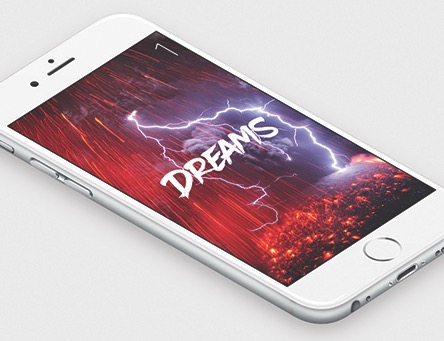A Start-Up Dreams of Simple Mobile TV

Call it Swipe Right for TV Entertainment. In early November, Dreams—a New York-based start-up co-founded by former Google product manager Tom Bender—launched its digital TV app for iOS and Android with about 70 content partners on board for the beta version.
The mobile-only service is a simple as it comes: launch the app, and a video automatically appears. It could be an independent film, live news or a simple video of baby pandas. Don’t like what you’re watching? Just swipe to the next one. And the channels switch at random each day. There are no menus, there’s no login and you can’t search for anything. As the review of one early user on the Android platform reads: “A stream of media consciousness. Random meta thoughts across the internet.”
Bender told Next TV that this is the way TV is going: mobile, simple, quick, and similar to regular, mindless channel-surfing in the living room. But that doesn’t mean there aren’t barriers between Dreams and success: bandwidth concerns, mobile data caps, and fickle viewers can all stand in the way.
Next TV: What was the impetus for Dreams, what are you trying to solve here?
Tom Bender: We’re completely focused on trying to build a really simple channel-surfing experience for phones. The entire reason we started this company is I don’t have a cable box, a lot of my friends don’t, and there was nothing as simple as just turning on the TV and surfing channels. It seemed insane that didn’t exist on phones. That’s the vision in a nutshell. We bootstrapped this company over the last couple months, launched it, and it’s exciting to have it in the wild now and have people using it.
Next TV: What are we looking at in terms of accessible content?
TB: We’re experimenting with a really broad range of content, from news to fashion to art to documentary, and we’re learning what works and what doesn’t, and where we want to go deep in terms of content. We’ve only been running it for a few weeks, so we have a lot of learning to do. For us, the most exciting part so far has been live news, this idea of tapping an icon and, during the election, seeing a Trump rally or Obama speech, or some kind of breaking news somewhere in the world, it’s pretty powerful on a mobile phone. We built the app with no login, there’s no search, there’s no thumbnails. There’s nothing to get in the way between the user and the content. You immediately see content, and it’s vertical, so it’s comfortable in your hand, filling the portrait screen.
Our focus has been news, but there’s a film festival vertical, fashion—which lends itself to the portrait view on phones—and we have nature and relaxation channels, which have received really good feedback. I don’t claim that we have it all figured out, but it’s now about getting user feedback, and figuring out where we really need to go in terms of content.
Next TV: What other content partners are you looking at next?
TB: We’re talking to a wide range of partners to add to the 70 partners we had at launch. We’re working with wire services to get live news and clips, we’re working with one of the largest fashion producers, we’re working with filmmakers, artists who do short videos, and music labels, which want to show their music videos. I think for us, the next thing to do is refine our content choices. Music is an exciting one for us, with live concerts and events in the mix.
Broadcasting & Cable Newsletter
The smarter way to stay on top of broadcasting and cable industry. Sign up below
Next TV: We’re streaming all this video, it’s going to do two things. Eat up battery power, and if people aren’t on Wi-Fi, eat up their data plan as well. How do you address that?
TB: More than once when we were beta-testing this, I exceeded the data cap on my own phone plan. It’s a very real issue, when you’re walking around without Wi-Fi. It’s something we’re looking at really closely. Long-term, there are things in our favor: 5G is coming out in 2017, and the cost of data is coming down to zero. What we’re doing is very carefully throttling the bandwidth for what we’re delivering, based on the user’s connection. We found that 85% of our users in the first week were on Wi-Fi, and for the 15% that were on cell, we looked at the connection speeds, capped the data of the video we delivered, throttled the bandwidth.
It’s definitely a concern, but I think in the long-term, people are just going to want to watch TV on phones, just like they do at home. That’s the trend, and data costs and bandwidth are changing rapidly.










